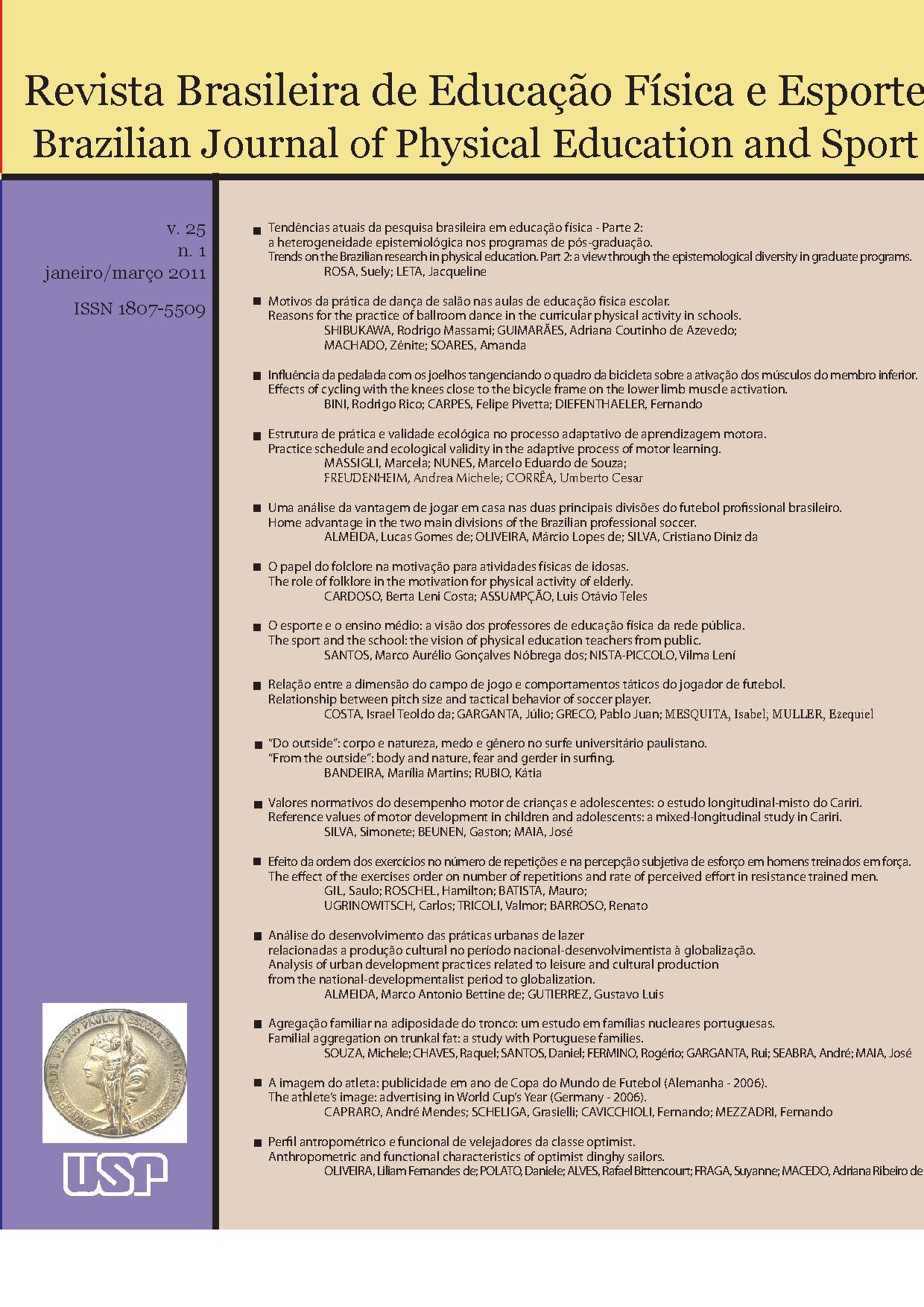Reasons for the practice of ballroom dance in the curricular physical activity in schools
DOI:
https://doi.org/10.1590/S1807-55092011000100003Keywords:
Motor activity, Dance, MotivationAbstract
The transversal study analyzed the reasons for the practice of ballroom dance in the curricular physical activity in private schools, relating them to the gender, its practice time and participation in ballroom dance events. The study was composed of 279 students at the age of 15.5 ± 1.0, enrolled in ballroom dance as part of regular physical education. The Sport Motivation Questionnaire - SMQ, adapted from SERPA and FRIAS (1990), SERPA (1992) was used. The descriptive and inferential statistics were used with a 95% significance level. Significant associations were found between reasons and the genders (r = 0.285; - 0.172); practice time (r = 0.174) and event frequency (r = 0.122; - 0.156). The ballroom dance offers in its practice a tool of countless possibilities, in which each of its participants search to fulfil their own necessities. According to the risen results it is noticeable that students are motivated with the practice of ballroom dance in schools presenting differences in gender, practice time, and event attendance. Then, it is suggested the creation of methodological proposals coherent to the main goals of the students of ballroom dance within the regular physical education environment in schools.Downloads
Download data is not yet available.
Downloads
Published
2011-03-01
Issue
Section
naodefinida
License
Todo o conteúdo da revista, exceto onde está identificado, está licenciado sob uma Licença Creative Commons (CC-BY)
How to Cite
Shibukawai, R. M., Guimarães, A. C. de A., Machado, Z., & Soares, A. (2011). Reasons for the practice of ballroom dance in the curricular physical activity in schools . Brazilian Journal of Physical Education and Sport, 25(1), 19-26. https://doi.org/10.1590/S1807-55092011000100003


